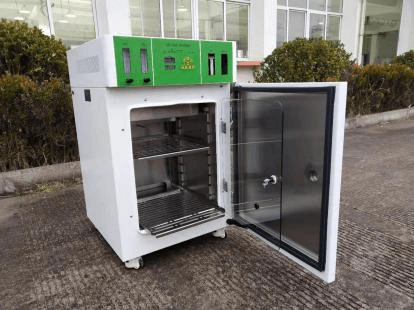In this article, we will explore two essential tips for maintaining and ensuring a clean and sterile CO2 incubator. The first tip focuses on the cleaning process, while the second tip delves into the various methods of sterilization.
Tip 1: Cleaning the CO2 Incubator
Proper cleaning is crucial to remove dust, dirt, and organic stains from the CO2 incubator. These substances can serve as habitats for microorganisms and may interfere with the effectiveness of decontamination agents like antibacterials, chemical germicides, and disinfectants. To achieve effective disinfection and sterilization, cleaning is a necessary first step.
Cleaning Methods:
Surface Cleaning: Begin by brushing off any dust present on the CO2 incubator's surface. Next, use a wet sponge or soft cloth soaked in soapy water or a low-concentration detergent to clean the surface thoroughly. After cleaning, dry the surface with a soft cloth.
Interior Cleaning: For the interior of the CO2 incubator, select a suitable disinfectant. Clean all objects and surfaces within the incubator, then rinse them with sterile water. Afterward, either wipe the surfaces dry or allow them to air-dry.
It's essential to use cleaning reagents that are chemically compatible with the subsequent disinfectant or sanitizer to be used. This ensures optimal results during the cleaning process.

Tip 2: Sterilizing the CO2 Incubator
The CO2 incubator is designed to simulate the growth environment of cells, tissues, and microorganisms accurately. Alongside precise environmental control, proper disinfection and sterilization are critical to maintain an effective cultivation process.
Distinguishing Disinfection from Sterilization:
Disinfection: This method involves using physical or chemical means to kill microorganisms, but it may not necessarily eliminate their spores. Disinfection measures are typically employed when the cells within the CO2 incubator are contaminated.
Sterilization: Sterilization is a more rigorous approach, aiming to eradicate all organisms, including their spores. It is generally carried out every 1-3 months, even when the cells in the incubator are not contaminated.
Methods of Disinfection and Sterilization:

Liquid Disinfectant: Choose a non-corrosive liquid disinfectant that suits the CO2 incubator. The effectiveness of the disinfectant depends on various factors, such as temperature, pH, contact time, penetration ability, and organic matter. Ensure meticulous attention to these factors for successful disinfection.
Ultraviolet Disinfection: Following a thorough cleaning with distilled water, expose the interior of the CO2 incubator to the ultraviolet (UV) lamp that comes with the equipment. UV lamps can help eliminate residual microorganisms and create a sterile environment.
Dry Heat Sterilization: Dry heat sterilization can be employed as an additional measure for contamination-hazardous areas. It involves exposing the CO2 incubator to direct heating up to 120°C for over 2 hours. This high temperature effectively destroys bacteria, ensuring a clean environment for cell culture.
In conclusion, the proper maintenance of CO2 incubators through regular cleaning and effective sterilization methods is crucial to create a safe and superior culture environment. By choosing suitable disinfection functions and implementing timely and appropriate cleaning techniques, researchers can ensure consistent contamination control and optimal results for their cell cultures.
